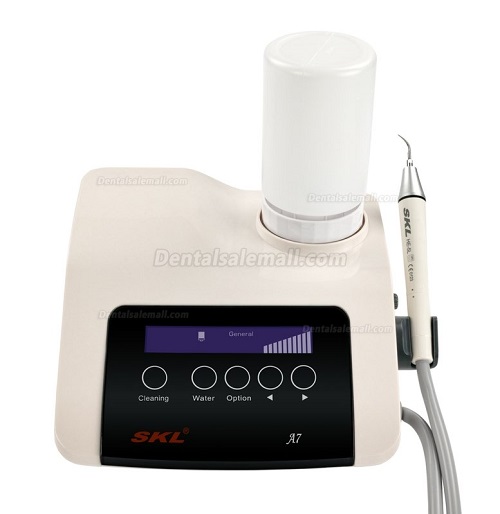Ultrasonic Scaler vs. Manual Teeth Cleaning
The process of teeth scaling, removing plaque and tartar from the teeth, is an important step in the hygienist's tooth cleaning process prior to polishing. While manual orthodontics using hand-held wipers is standard in the past, modern dentists and hygienists are increasingly using dental ultrasonic scaler instead. Why? Here is a view of how these options compare to each other.

Ultrasonic Teeth Cleaning
Studies have shown that ultrasonic scalers are at least as effective as manual scalers in removing tartar from tooth surfaces, including removing tartar from shallow pockets. However, the real thing that ultrasonic instruments shine is the removal of deposits from deeper pockets. The tips for these tools are small and can easily reach the more troublesome areas of hand tools. In addition, the coolant sprayed by the ultrasonic scaler actually increases the accumulation of accumulated plaque and tartar. At the same time, the ultrasonic calibration tool introduces oxygen bubbles into these deeper pockets, destroying the deeply nourishing oxygen bacteria.
Manual Scaling
Manual scaler is as effective as the ultrasonic ones, which removes plaque and tartar that are easily accessible to the teeth. In fact, manual scalers can be easily picked up and used as needed, making these tools more suitable for removing a small amount of accumulated plaque. However, there are some disadvantages to using a manual scaler, such as increasing the time required to complete a tooth cleaning procedure. Finally, the manual scaler is less effective at eliminating severely accumulated plaque, tartar and staining than the ultrasonic scaler, and as described above, cleans deeper pockets.
Safety for Seniors with Weakened Teeth
One might expect an ultrasonic zoom tool to be more dangerous for weak teeth, but the opposite is true. Manual scalers that require a scraping force to effectively remove a large amount of enamel may rot the teeth and cause tooth sensitivity. In contrast, dynamic calibration instruments have proven to be less damaging to the tooth surface. This means that when the elderly patient needs teeth scaling, the ultrasonic scalers are likely a better choice than the manual ones in terms of enamel.
Therefore, we'd better to choose ultrasonic scalers to clean our teeth. They are now widely used for an effective removal of plaque and calculus from the teeth, as well as removing bits of inflamed tissues on the walls of the gingival crevice. And the ultrasonic scaler with water bottle has four function (scaling, perio, endo and auto water supply).
Next:Dental Handpieces: An Overview Of The Options
Previous:Can You Whiten The Crowns, Implants, and Veneers With Whitening Strips?
Previous:Can You Whiten The Crowns, Implants, and Veneers With Whitening Strips?
